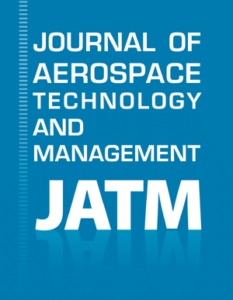Eduardo Leite Simões e Silva, Engenheiro de Desenvolvimento de Produto, ELEB EQUIPAMENTOS LTDA, São José dos Campos, São Paulo, Brasil.
The utilization of smart technologies in commercial aircraft is a trend that has been growing as new technologies are implemented in the daily lives of the population. Therefore, the aircraft manufacturers are developing the so-called Smart Cabin Concepts. These concepts are examples of how technology can create new lines of customization for the passenger, as well as improve their experience by creating new business opportunities for airlines.
The application of the Smart Cabin Concept improves the ground tasks agility, assists the crew in their in-flight tasks and allows the aircraft operation to become more sustainable. Flying on planes with a cabin that utilizes state-of-the-art technologies will provide a more enjoyable experience that will result in happier passengers and more efficient airlines.
However, most of the smart cabin concepts developed by aircraft manufacturers (OEMs) are focused on wide body aircraft for long distances, however, regional aviation can also benefit from these types of technology.
Therefore, the articles Smart Cabin Design Concept for Regional Aircraft: Challenges, Future Aspects & Requirements and Smart Cabin Design Concept for Regional Aircraft: Technologies, Applications & Architecture, published in the Journal of Aerospace Technology and Management (JATM) (vol. 15), have the objective of creating a path for a new benchmarking by proposing a preliminary architecture of the concept of Smart Cabin to be implemented in regional aircraft from 60 to 120 seats.
The utilized methodology is the one described in the NASA Systems Engineering Handbook (2016), which presents the required research steps that must be fulfilled so that the final smart cabin solution can achieve the expected results.
Figure 1. Preliminary architecture of the smart cabin concept.
Studies developed by Peter Vink have supported the studies related to passenger cabin. Also, design thinking tools are utilized in the articles to support the achievement of the results obtained in the main phases of product development, such as: “Studies of the main users and what are their respective needs, pains and expectations”; “Creation of the high-level requirements of the smart cabin concept based on the users’ needs”; “Study of the potential technologies that can be applied to the concept to meet the established requirements”; “Development of a preliminary architecture of the smart cabin system”.
The study provides more than just a preliminary concept of intelligent cabin, but it also presents the possible smart technologies that can be used in aircraft, thus fostering a constant improvement of the aeronautical industry to remain at the forefront of technology.
The article details the initial phases of development of a product, whether aeronautical or not, and provides a vision of how design thinking tools can be applied to the product development methodology presented in the NASA Systems Engineering Handbook to develop and validate market and product requirements for the most diverse applications.
The main challenges are the evolution of the Technology Readiness Level (TRL) of smart technologies aiming its application in a final product without ignoring the need to maintain implementation costs competitive. It is also important to conduct a more comprehensive survey with users and airlines to confirm the high-level requirements adopted. Finally, in addition to the sphere mentioned before, it is necessary to elevate the level of system detailing to allow its implementation in a demonstrator aircraft to validate its integration with the system.
Watch the video (in Portuguese) by Eduardo Leite Simões e Silva, which expands on the discussion of how the implementation of new technologies can help the user experience.
References
NATIONAL AERONAUTICS AND SPACE ADMINISTRATION (NASA). Nasa systems engineering handbook. NASA, 2016.
SILVA, E.L.S. Smart Cabin Design Concept for Regional Aircraft (master’s thesis). São José dos Campos: Instituto Tecnológico de Aeronáutica, 2021.
To read the articles, access
SILVA, E.L.S., MORAES, A.O. and CIACCIA, F.R.D.A.S. Smart cabin design concept for regional aircraft: challenges, future aspects & requirements. J Aerosp Technol Manag [online]. 2023, vol. 15, e1923 [viewed 27 October 2023]. https://doi.org/10.1590/jatm.v15.1309. Available from: https://www.scielo.br/j/jatm/a/wddvkSJZxqLJdJrM3cnhPnB/
SILVA, E.L.S., MORAES, A.O. and CIACCIA, F.R.D.A.S. Smart cabin design concept for regional aircraft: technologies, applications & architecture. J Aerosp Technol Manag. [online]. 2023, vol. 15, e2023. e-ISSN: 2175-9146 [viewed 27 October 2023]. https://doi.org/10.1590/jatm.v15.1310. Available from: https://www.scielo.br/j/jatm/a/JbGTcnkngJyVDWFPgv4KX7K/
External links
Journal of Aerospace Technology and Management – JATM : https://www.scielo.br/j/jatm
Eduardo Leite Simões e Silva – LinkedIn: https://www.linkedin.com/in/eduardo-leite-simões-e-silva/
Como citar este post [ISO 690/2010]:















Recent Comments